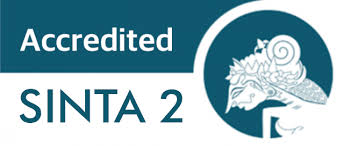Interaksi Umat Islam Indonesia Terhadap Lansia (Studi Living Qur’an)
DOI:
https://doi.org/10.29240/alquds.v5i2.2525Keywords:
qur’an, interpretation, thematic interpretation, thematic tafseer, living quran, elderlyAbstract
Interaction of Indonesian Muslims towards the Elderly (Study of the Living Qur'an)
Through the Qur'an and Hadith, Islam upholds the honor of the elderly. The attitudes, words, and deeds of the prophet Muhammad SAW were the actualization of the values of the Qur'an, so that he was dubbed "the walking Qur'an". Rasulullah SAW's exemplary example becomes the prototype of the concept of living al-Qur'an which is the values of Qur’an that are understood, and practiced collectively by Muslims community, then become local wisdom. This paper analyzes the elderly in the perspective of the living Qur’an of Indonesian Muslims. In processing the data in this study, the authors used thematic tafseer methods and living quran. From this study the authors found that the concept of living quran Indonesian society in terms of treatment of the elderly is very good, it is manifested in some local wisdom of Indonesian society towards the elderly, such as the use of special language for the elderly, kissing the hands of the elderly, bowing when walking in front of the elderly and and the ritual of ziarah makam leluhur.
Downloads
References
Aji, Mujib Hendri, Muhammad Zainul Hilmi, dan M. Taufiq Rahman. “The Living Qur’an as a Research Object and Methodology in the Qur’anic Studies.†Jurnal Iman dan Spiritualitas 1, no. 1 (2021): 78–84.
Al Mubarroh, Nadya Ristamida, Indra Himawan Susanto, dan Yetty Septiani Mustar. “Aktivitas fisik dan aspek kekhawatiran lansia pada masa pandemi Covid-19.†Altius: Jurnal Ilmu Olahraga dan Kesehatan 10, no. 1 (2021): 97–111.
Asfahani (al), Raghib (al), al-Mufradat fi Gharib al-Qur’an. Mekkah: Maktabah Mustafa Nizar al-Baz, ___.
“‪Bina’al-Fiqh al-Hajj al-Muyassar‬.†Diakses 3 September 2021. https://scholar.google.co.id/citations?view_op=view_citation&hl=id&user=XGUYN5YAAAAJ&citation_for_view=XGUYN5YAAAAJ:d1gkVwhDpl0C.
Dasrial, Ade, Sarmiati Sarmiati, Afrizal Afrizal, dan Zainal Zainal. “Konstruksi Pemaknaan Simbolis Salaman Mencium Telapak Dan Punggung Tangan Guru Oleh Santri Ponpes Nurul Yaqin.†AL MUNIR: Jurnal Komunikasi dan Penyiaran Islam, 2020, 1–17.
Dawud, Abu. Sunan Abi Dawud. Beirut: Dar Ibn Hazm, 1997.
Halaby (al), Samin (al). Umdat al-Huffadz. Beirut: Dar al-Kutub al-‘Ilmiyyah, 1997.
Hanbal, Ahmad ibn. Musnad al-Imam Ahmad ibn Hanbal. Vol. 41. Beirut: Mu’assasah al-Risalah, 1995.
Hardianti, Dian, Jamaluddin Hos, dan Sarpin Sarpin. “Bentuk Dukungan Keluarga Dalam Menjaga Kesehatan Mental Lansia.†Jurnal Kesejahteraan dan Pelayanan Sosial 1, no. 2 (t.t.): 138–47.
Hardivizon, H. (2019). Telaah Historis-Hermeneutis Hadis-Hadis Tentang Ayah. FOKUS Jurnal Kajian Keislaman dan Kemasyarakatan, 3(2), 147-170. doi:http://dx.doi.org/10.29240/jf.v3i2.616
Jajasan Penjelenggara Penterdjemah/Pentafsir Al-Qoeraan (1967). Alquran dan Terjemahnya edisi penyempurnaan. Lajnah Pentashihan Mushaf Al-Qur’an, 2019.
Kumi (al), Ahmad Sayyid, dan Muhammad Ahmad Yusuf Qasim (al). al-Tafsir al-Mawdu’i li al-Quran al-Karim, 1982.
M. Mansyur, ed. Metodologi penelitian living Qur’an & Hadis / M. Mansyur. Yogyakarta: TH-Press [u.a.], 2007.
Maladi, Yasif. Makna dan Manfaat Tafsir Maudhu’i. Prodi S2 Studi Agama-Agama UIN Sunan Gunung Djati Bandung, 2021.
Manzur, Ibnu. Lisan al-'Arab. Kairo: Dar al-Ma'arif,____.
Maulidah, Evi. “Pendidikan Anak Usia Dini Menurut Al-Qur’an Dalam Kajian Tafsir Maudhu’i.†Childhood Education: Jurnal Pendidikan Anak Usia Dini 2, no. 2 (2021): 170–82.
Poedjosoedarmo, Soepomo, dkk., Tingkat Tutur Bahasa Jawa. Yogyakarta: Kementerian Pendidikan Dan Kebudayaan Badan Pengembangan Dan Pembinaan Bahasa Balai Bahasa Provinsi Daerah Istimewa Yogyakarta, 2013.
Qurtubiyy, Muhammad al-. al-Jami’ li Ahkam al-Qur’an. Vol. 6. Kairo: Dar al-Hadith, 2007.
Rachmadiana, Metta. “Mencium Tangan, Membungkukkan Badan: Etos Budaya Sunda,
Yogyakarta, Madura.†HUMANITAS: Indonesian Psychological Journal 1, no. 2 (31 Agustus 2011): 33–44.
“Ramah, Identitas Indonesia di Mata Dunia.†Diakses 3 September 2021. https://www.goodnewsfromindonesia.id/2018/07/25/ramah-identitas-indonesia-di-mata-dunia.
Razi (al), Fakhruddin Muhammad. al-Tafsir al-Kabir aw Maaftih al-Ghayb. Vol. 23. Kairo: Maktabah Tawfiqiyyah, __.
Rodin, Rhoni. “Tradisi Tahlilan dan Yasinan.†IBDA: Jurnal Kajian Islam dan Budaya 11, no. 1 (2013): 76–87.
Salafudin, Ahmad Basith. “Studi Living Qur’an: Tradisi Pembacaan Surat Al-Waqi’ah Di Pondok Pesantren Darul-Falah Tulungagung.†Al-Dzikra: Jurnal Studi Ilmu al-Qur’an dan al-Hadits 15, no. 1 (2021): 111–38.
Simamora, Tia Subu. “Tradisi Pembacaan Yasin 41 Studi Living Qur’an.†Jurnal El Thawalib 2, no. 2 (2021): 1–14.
Sucipto, Sucipto, dan Fajar Rinawati. “Perbedaan Depresi Lansia di Pondok Lansia dan Lansia di Posbindu.†Jurnal Ilmiah Permas: Jurnal Ilmiah STIKES Kendal 11, no. 1 (2021): 43–48.
Tantawi, Muhammad Sayyid. al-Tafsir al-Wasit li al-Qur’an al-Karim. Vol. 9. Kairo: Dar al-Sa’adah, 2007.
Winarni, Sri, Djoko Nugroho, dan Farid Agushybana. “Dasar Kesehatan Reproduksi,†t.t.
Yanti, Meyi, Alkafi Alkafi, dan Defi Yulita. “Senam Lansia terhadap Tekanan Darah pada Lansia Hipertensi.†JIK (Jurnal Ilmu Kesehatan) 5, no. 1 (2021): 44–52.
Zuhaily, Muhammad Wahbah al-. al-Tafsir al-Munir fi al-‘Aqidah wa al-Shari’ah wa al-Manhaj. Vol. 6. Damaskus: Dar el-Fikr, 2003.
Downloads
Published
How to Cite
Issue
Section
Citation Check
License
Authors who publish with AL QUDS : Jurnal Studi Alquran dan Hadis agree to the following terms:- Authors retain copyright and grant the journal right of first publication with the work simultaneously licensed under a Creative Commons Attribution-NonCommercial-ShareAlike 4.0 International License (CC BY-NC-SA 4.0) that allows others to share the work with an acknowledgment of the work's authorship and initial publication in this journal.
- Authors are able to enter into separate, additional contractual arrangements for the non-exclusive distribution of the journal's published version of the work (e.g., post it to an institutional repository or publish it in a book), with an acknowledgment of its initial publication in this journal.
- Authors are permitted and encouraged to post their work online (e.g., in institutional repositories or on their website) prior to and during the submission process, as it can lead to productive exchanges, as well as earlier and greater citation of published work (See The Effect of Open Access).









